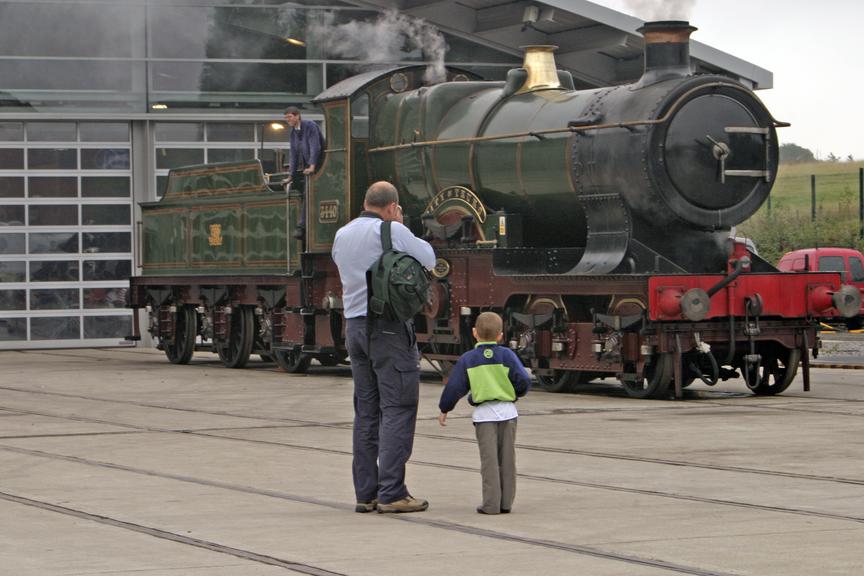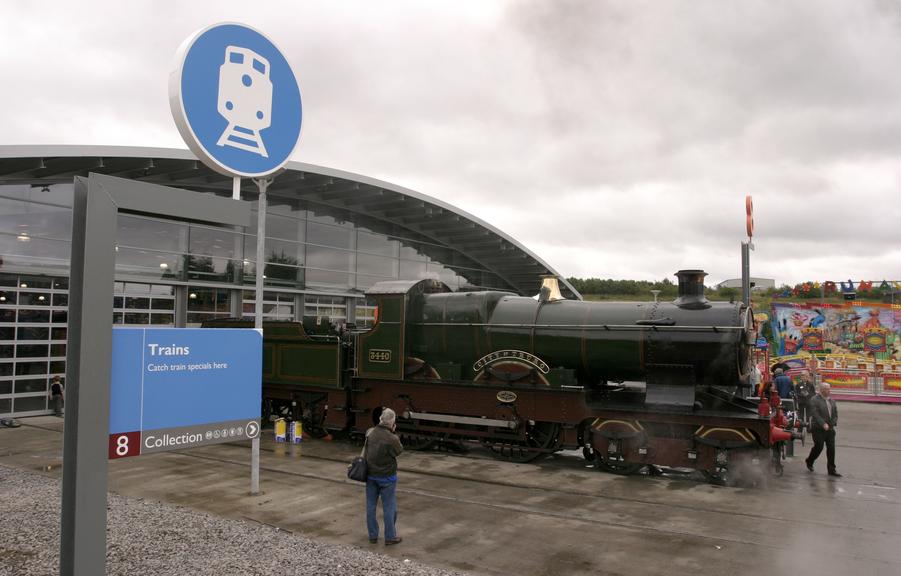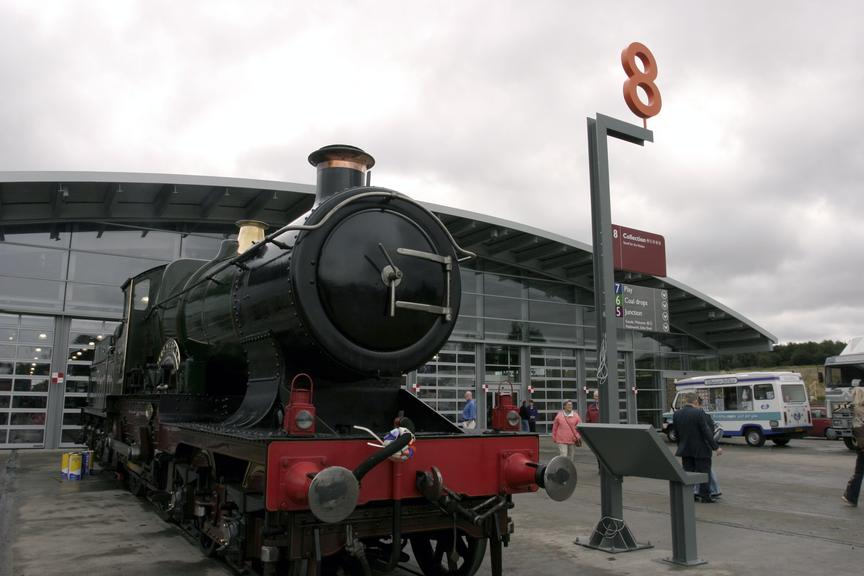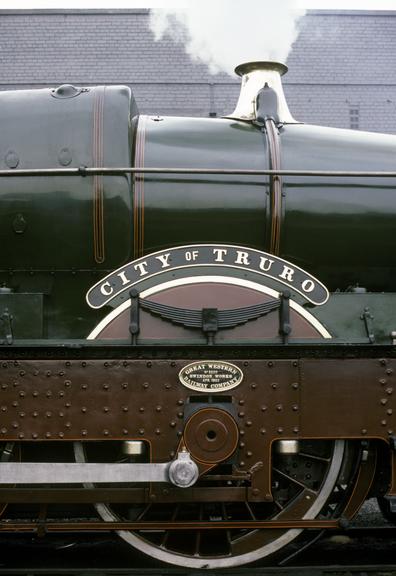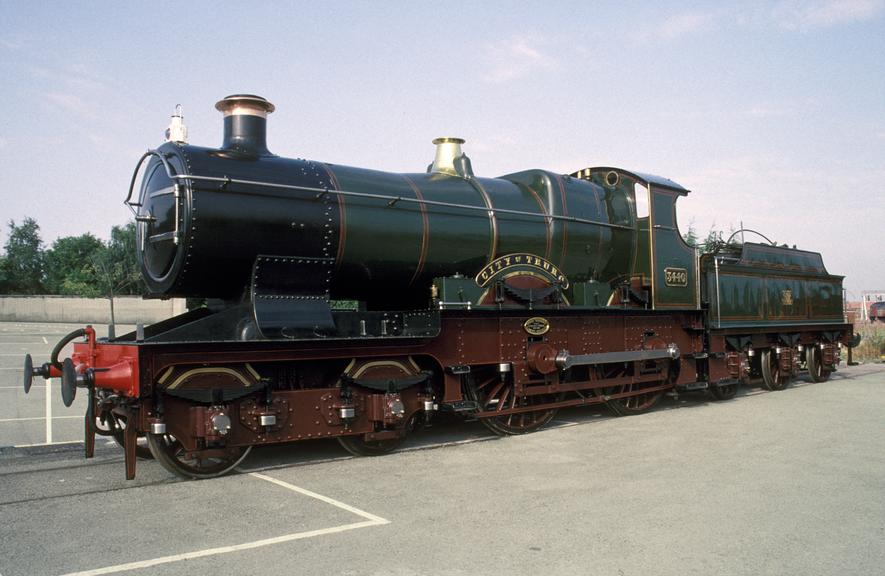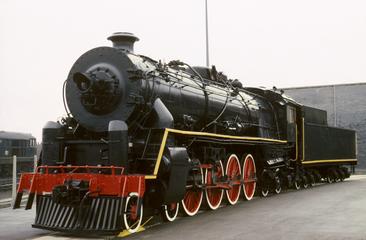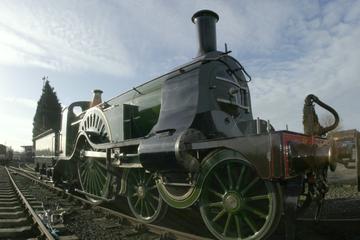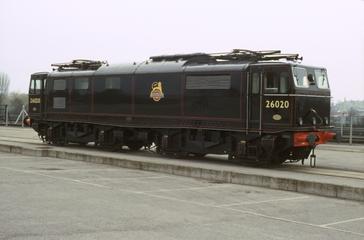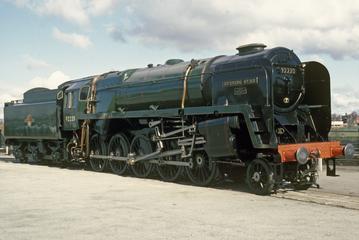'City of Truro' Steam locomotive worksplate
Worksplate, brass, oval, black background, Great Western Railway, No. 2000, Swindon Works, April 1903, from 4-4-0 No 3440 "City of Truro", reverse marked ‘R’, 449mm x 21mm x 223mm.
More
City of Truro was the eighth of a batch of ten A49 locomotives built in Swindon in 1903. It is now one of only two surviving Great Western Railway (GWR) double-framed 4-4-0 locomotives. Often referred to as ‘Churchward’s locomotive’ No. 3440 was built in 1903 and Churchward took over the role of Chief Mechanical Engineer from William Dean in 1902, thus both men have been credited here as designer.
City of Truro is best known and celebrated as the first British steam locomotive to have exceeded 100mph. On 9th May 1904 it pulled the Oceans Mail train from Plymouth to London Paddington; during its descent of Wellington Bank in Somerset the locomotive achieved a maximum speed slightly in excess of 102mph. Although the exact figure has been widely debated, it is generally agreed that City of Truro was indeed the first steam locomotive to achieve 100mph.
After City of Truro was withdrawn from service in March 1931, it was displayed in the old Railway Museum in York. Then, in 1957 it was restored to working order at Swindon works and pulled special trains as well as regular services on the Didcot, Newbury and Southampton line. City of Truro was once again withdrawn in 1961 and was subsequently exhibited at the Museum of the Great Western Railway in Swindon, which opened in 1962.
In 1984, City of Truro was again restored to working order, this time by the Severn Valley Railway (SVR). It worked services for the SVR as well as working main line excursions. The locomotive returned to York in 1986, from where it hauled the Scarborough Spa Express. City of Truro’s most recent restoration work was carried out in 2004, marking the centenary of the locomotive’s record breaking run. City of Truro no longer operates on the main line.
- Measurements:
-
overall: 223 mm x 449 mm x 21 mm,
- Materials:
- brass (copper, zinc alloy)
- Object Number:
- 1978-7025/5
- type:
- locomotive worksplate


























